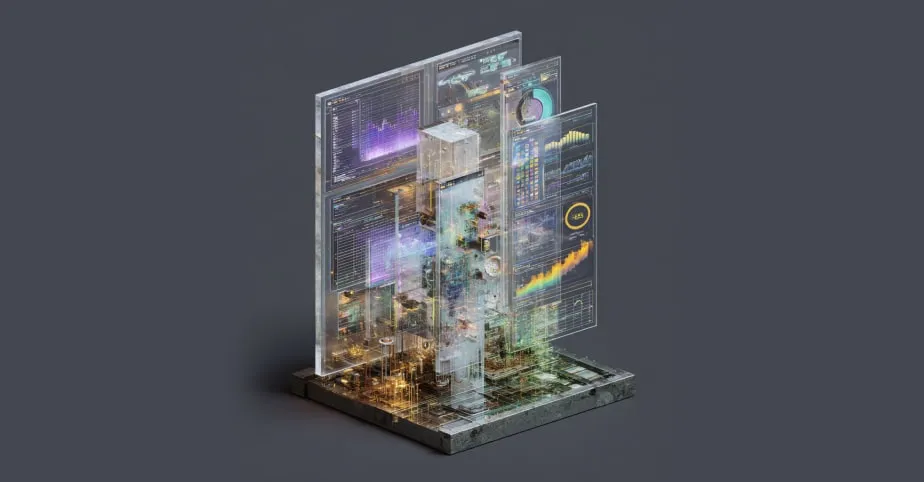Review of top 5 cybersecurity threats and popular data breach protection systems
Sep 24, 2020 • 6 min read

Data breach protection systems will earn more than $133.7 billion in 2022 worldwide. In 2020, cyber attacks have become so common that about 68% of business owners feel the increasing risks of being hacked. Luckily, cybersecurity in businesses that offer outsourcing software development services is a high priority. Read about the most common types of data security breaches and the preventative measures against data breaches that you can implement in your tech company.
- What are the top 5 cybersecurity threats directed at tech companies?
- Which 4 major preventive measures against data breaches should you use?
- What are the data security risks related to remote work?
Definition of data breach protection
Data breach protection is a set of activities aimed at securing databases, files, and accounts on the computer network from cyberattacks by setting up applications, controls, and antivirus software.
Cyberattacks are aimed at crashing opponents by destroying their reputation, intercepting their clients, or slowing down online revenue generation. While an amateur hacker can crash your website, a team of professional hackers is capable of stealing commercial, financial, and private data from your servers.
Just like online product businesses, software development outsourcing companies and outstaffing vendors have access to sensitive data of their clients, which drives them to adopt all possible cyberattack prevention systems. While some businesses outsource their data security to companies specializing in cybersecurity, others hire software developers in Ukraine for software security testing or bring in cybersecurity officers to their team.
Why Central and Eastern European countries are a sweet spot for global companies seeking high-end tech at a sensible price.
Download a guideThe approximate budget for cybersecurity in 2021 will reach $6 trillion. Just in 2019, about43% of small businesses reported cyberattacks. Threats come in various forms: some of them attempt to penetrate your systems by breaking them, while others enter your business through emails. About 64% of businesses have undergone web-based attacks. Near 62% of them experienced phishing attacks, 59% became victims of malicious code, and 51% reported denial of service attacks.
Malware
Malware is an umbrella term for malicious software such as worms, ransomware, spyware, and viruses. They enter the system through vulnerable places, like when employees click on a dangerous email attachment or link and involuntarily download malicious software. Here’s what malware can do after it has entered the system:
- Malware installs other harmful software
- Ransomware: blocks access to important parts of the network
- Spyware: transmits data from the hard drive in background mode
- Breaks the system by disrupting certain components
- Malware installs other harmful software
- Ransomware: blocks access to important parts of the network
- Spyware: transmits data from the hard drive in background mode
- Breaks the system by disrupting certain components
Hacking
Hacking is associated with gaining access to an IT system beyond an organization. It’s also widely used to acquire bank account information and private data such as passwords and usernames.
Phishing
Phishing is a security breaching practice in which someone sends communication, usually emails, that seem to be sent from a reputable source with the aim of getting sensitive information, making recipients do something, or install malware.
DoS and DDoS
In DoS (Denial of Service) attacks, a computer is used to flood a server with an abnormal number of UPD and TCP packages, which inhibit the computer’s major functions. Eventually, the server alerts the system administrator about the denial of services and crashes. In DDoS (Distributed Denial-of-Service) attacks, hackers use multiple systems in different locations to target one system with DoS attacks.
Man-in-the-Middle Attack
A MitM attack is an interruption between a two-party data transaction. As hackers interrupt the traffic, they begin stealing and filtering data. MitM attacks frequently occur in unprotected Wi-Fi networks where an attacker breaches a user’s device and steals information without the user knowing it.
How to prevent data breaches? First of all, inform your employees about cyberattacks — 22% of all data breaches happen due to human error. Then, do software security testing to search for vulnerabilities in your network and make sure that each data exchange gateway filters the traffic. The following systems can be very handy:
Network security systems
A network is the gateway of data exchange between computers and servers, which gives hackers a handful of opportunities to get in. Now that you understand how attackers can penetrate your system, you should implement security solutions that would prevent data breaching and ensure the overall cybersecurity of your business.
VPN Tunnels
A Virtual Private Network tunnel is an encrypted connection between your mobile device or computer and an external network. It connects your devices to a network, hides your IP address, and encrypts all the actions you do online.
A VPN tunnel can hide your online identity, secure your online connections, and allow you to access online documents safely since all your online activity is encrypted.
Firewalls
A firewall is a barrier between your internal network and external traffic. It monitors in-and-out-going packages of network traffic and allows or bans them based on a set of security rules. Its main aim is to protect the internal network from hackers and malicious software.
Firewalls keep non-authorized users outside, identify and notify about suspicious activity within the internal network, and help filter inappropriate and appropriate materials.
Proxy Servers
A proxy server is an intermediary server that separates you, the end user, from the websites you browse. Compared to firewalls and VPN tunnels, a proxy server is more customizable. It hides your IP address, filters out suspicious and dangerous websites, and reduces loading time.
You can set a certain functionality depending on your needs, use case, and company policy. A proxy server works like a two-way filter: on its way to the requested address, internet traffic first flows through the proxy server and then does the same on its way back to the user.
DLP Systems
DLP stands for Data Loss Prevention, a set of tools and practices used to prevent sensitive business data from being lost, misused, or accessed by an unauthorized user. DLP enables administrators to monitor shared data and prevent end users from exporting key business information outside the internal network.
Mobile device management systems
More than 42% of enterprises consider themselves mobile-first, which makes MDM systems a must for companies that allow their employees to use their own smartphones, laptops, tablets, and IoT devices. An MDM system enables secure access to sensitive business information via mobile devices by storing essential data about the device, deciding which apps can be uploaded onto the device, locating devices, and securing devices in case they’re stolen.
With an MDM, an administrator can lock and delete devices from the system, manage them, and locate them if they’re lost — all remotely.
Endpoint security systems
Endpoint security systems are installed on computers connected to your internal network to secure each individual device from cyberattacks and data breaching. Heuristic analysis antiviruses and signature antiviruses are the most widely used endpoint security systems.
Signature Antiviruses
A signature antivirus is a powerful security means used when a system is being attacked by common viruses with similar signatures. The security system uses a Virus Signature Database to compare potential viruses with the existing samples and identify a hazard. When a system runs a check searching for one particular virus, it can find other (even unknown) viruses with the same signatures.
Antiviruses Based on Heuristic Analysis
Antiviruses with the heuristic analysis approach track and analyze abnormal activity of applications that are already installed on your computer. This type of antivirus software is especially potent when it comes to predicting the occurrence of a virus even as new as zero-day attack viruses.
Physical security systems
The physical security of data carriers is usually overlooked even though it’s the first thing to care about. Simply keeping the attackers away from your computers, servers, and premises will secure your business from losing important information stored in hardcopy carriers. The more security checks a visitor or an employee passes, the lower are the chances of having anything stolen. That said, we recommend setting authentication systems at the office entrance and access control systems, hiring security, and organizing video surveillance.
-
No control over the employee’s internet connection
- Working from an unprotected Wi-Fi without special protection software. As you connect to an unprotected Wi-Fi network, you open a gate to a cyberattack. A hacker can breach your computer and steal your data without you noticing. A proxy server or a VPN tunnel can be a good solution as it would encrypt and hide all your data.
-
Data interception in hacked networks
- Hackers can crack a network that was considered safe and steal information from a user. In this case, using a VPN tunnel would be a good choice because it ensures data encryption. This way, even when a hacker receives information, it just doesn’t make sense.
-
Physical loss of a computer
- No one is safe from having their computer stolen. That’s why many tech companies with remote employees request programmers to sign BYOD (Bring Your Own Device), a contract that ensures personal responsibility for keeping data safe from viruses, maintaining codes, and guaranteeing safety of a computer. It also typically allows the company to distantly manage the cybersecurity of a device.
Windup
Cybersecurity has been gaining momentum due to the rising number of cyberattacks. Having no cybersecurity systems, both large and small businesses alike become easy targets for hackers. Luckily, there’s a great variety of data breach protection systems that can defend companies from losing sensitive information.
- Network security systems
- Mobile management security systems
- Endpoint security systems
- Physical security systems
These four major systems can ensure a safe data exchange and prevent the intervention of the most popular cyber threats, which are:
- Malware
- Hacking
- Phishing
- DoS and DDoS
- MitM
Tags
You might also like
Today, agentic AI can autonomously build, test, and deploy full-stack application components, unlocking new levels of speed and intelligence in SDLC automation. A recent study found that 60% of DevOps teams leveraging AI report productivity gains, 47% see cost savings, and 42% note improvements in...

Today, many organizations find themselves grappling with the developer productivity paradox. Research shows that software developers lose more than a full day of productive work every week to systemic inefficiencies, potentially costing organizations with 500 developers an estimated $6.9 million an...
Fortune 1000 enterprises are at a critical inflection point. Competitors adopting AI software development are accelerating time-to-market, reducing costs, and delivering innovation at unprecedented speed. The question isn’t if you should adopt AI-powered development, it’s how quickly and effectivel...
According to Gartner, by 2028, 33% of enterprise software applications will include agentic AI. But agentic AI won’t just be embedded in software; it will also help build it. AI agents are rapidly evolving from passive copilots to autonomous builders, prompting organizations to rethink how they dev...
When it comes to the best web development frameworks, finding the right balance between efficiency, creativity, and maintainability is key to building modern, responsive designs. Developers constantly seek tools and approaches that simplify workflows while empowering them to create visually strikin...
Most enterprise leaders dip their toe into AI, only to realize their data isn’t ready—whether that means insufficient data, legacy data formats, lack of data accessibility, or poorly performing data infrastructure. In fact, Gartner predicts that through 2026, organizations will abandon 60% of AI pr...

For many businesses, moving away from familiar but inherently unadaptable legacy suites is challenging. However, eliminating this technical debt one step at a time can bolster your confidence. The best starting point is transitioning from a monolithic CMS to a headless CMS. This shift to a modern c...









